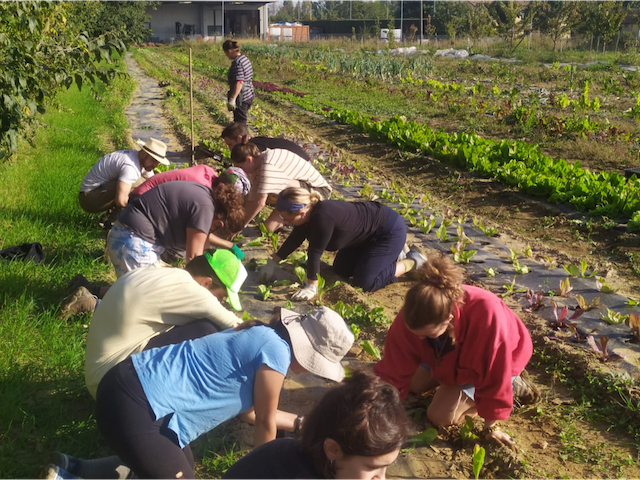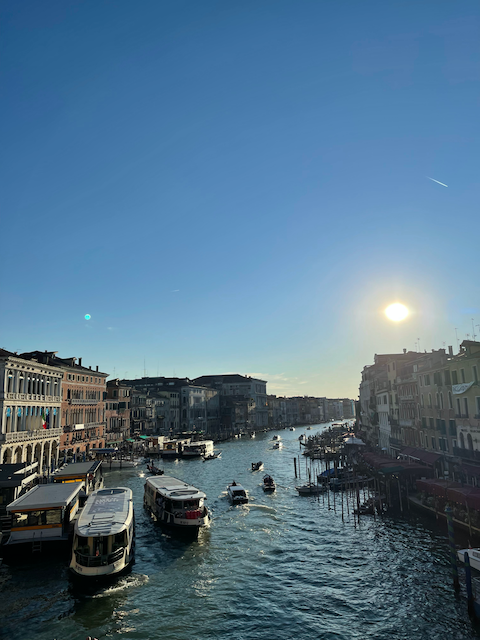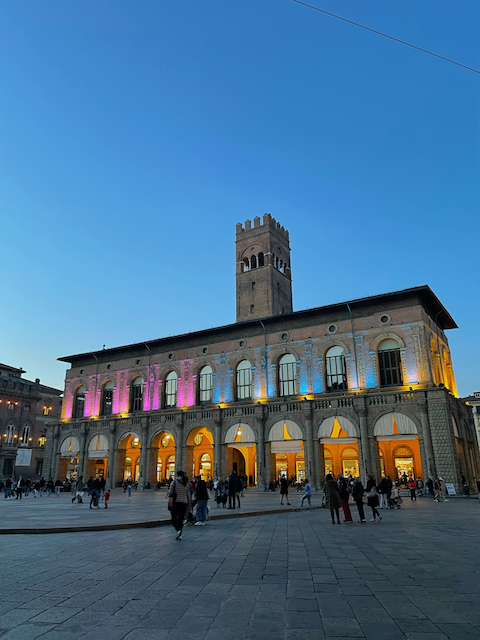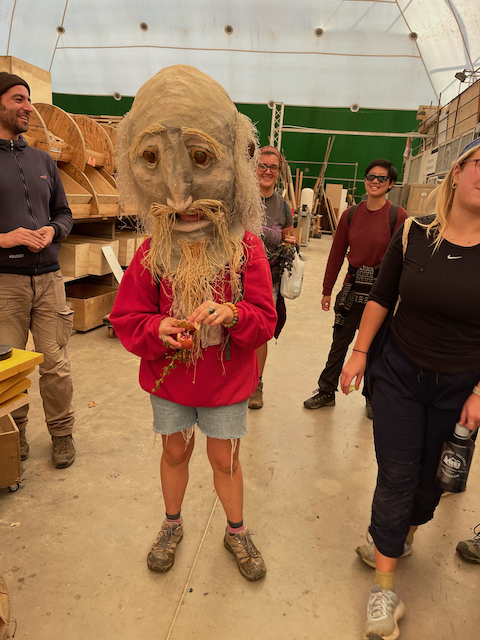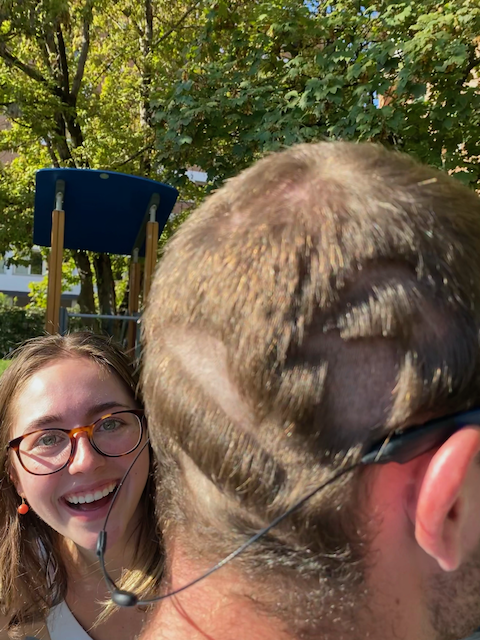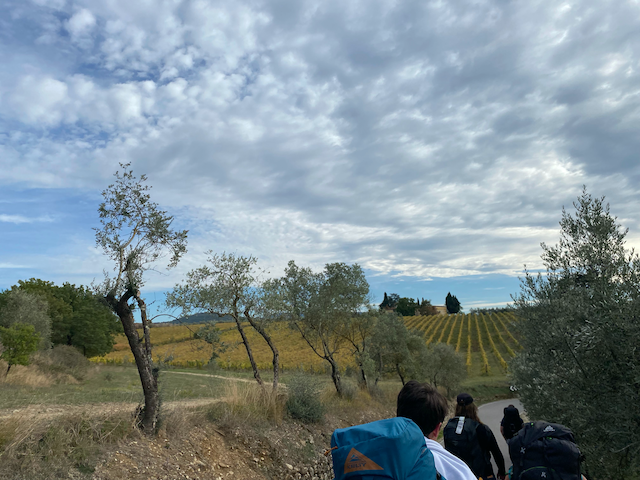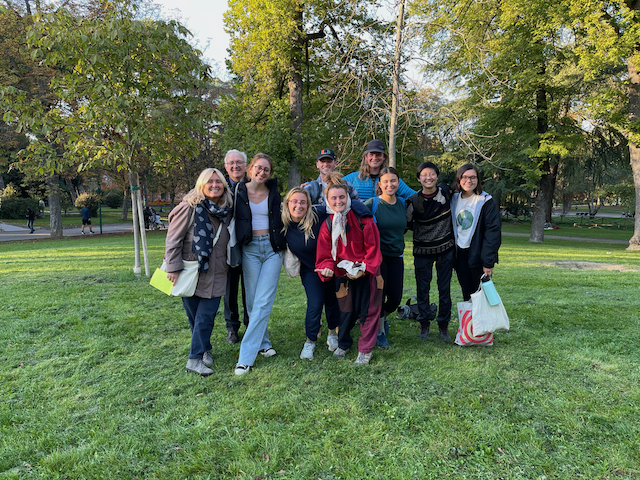
Written By Liam & Vivi
Though leaving Greece was bittersweet, we were excited to arrive in Bologna and start the second phase of our journey in Italy! We were treated to our first views of the city through our taxi rides to the hostel. We settled into our hostel, a former monastery, then set out to grab some lunch and explore the city. After lunch, we headed to a nearby park to meet with Enrico, our local contact, to learn more about him and the projects we were visiting this week. We continued our dialogue on climate change through a partnered active listening activity before returning to a whole group discussion. While in the park, we also had the opportunity to walk through La Serré, a community gathering space, to view their aquaponics project, greenhouse, and art installations. For our first dinner, much of the group tried traditional Bolognese dishes like tagliatelle al ragù and tortellini, complemented by our first Italian gelato!
Typically, our days in Bologna began with three hour Italian lessons led by our fantastic teachers, Andrea and Giulia. We would spend the first half learning basic Italian vocabulary and grammar. During the second half of our lessons, we moved our classes to nearby parks, embracing the city’s natural beauty and testing out our new Italian skills by ordering coffee in cafes along the way. Our afternoons consisted of a variety of activities that helped us continue to explore the city and interact with different agricultural approaches to coping with climate change and its effects.
For the session this week, we focused on nonverbal communication as it is pertains to bridging gaps in communication where language skills falter. To introduce the necessity of nonverbal communication, as well as its challenges, we played a game where one person mimes different actions, such as catching a chicken, while other players enter one at a time to guess what the first person is doing, then join in the acting. After a few rounds with different prompts, we transitioned into a discussion of how the issues communicating within the game present themselves in situations while traveling, and how strategies from the game could be applied in real life. The grand finale of the session was an activity where the group was tasked with shaving a Bob Ross style landscape into Liam’s head, without speaking about each of their ideas.
Visit to Arvaia: On Thursday afternoon we took the train with Enrico to Arvaia, a co-op prioritizing traditional and organic agricultural practices. We helped weed their beautiful rows of broccoli before taking a tour of their land with one of the founding members and their head of communications. On the tour, we learned that an ancient Roman road runs through their land which has influenced them to incorporate many traditional farming techniques. One of the ways they honor the history is by planting trees to serve as divisions between different fields and then growing grapes in between the trees to serve as a fence. Arvaia is also noted for its focus on increasing access to organic food, particularly through its payment process. After calculating a total needed to run their operations for the upcoming year, each member writes an initial value that they can afford to pay. This technique creates a community which supports and includes people from all socioeconomic levels with a weekly allocation of fruit and vegetables 50 weeks out of the year at a price that each family can afford.
City Tour with Andrea: On Friday afternoon, we met Andrea in the Piazza Maggiore for a walking tour through the city center to learn about the more historic areas and monuments. Our starting place near the Fountain of Neptune (“The Big Guy”) allowed us to take in its majesty while Andrea noted a local joke based on the sculptor’s subtle undermining of the Pope’s criticism. The proximity of Palazzo d’Accursio, the former center of government in Bologna, and the Basilica di San Petronio helped us understand the traditional tension between the civil and religious powers in the city. We learned that abrupt end to one of its wings was a result of the Pope halting its construction because the original cross-shaped design would have made it larger than St. Peter’s in Rome. As we headed into the narrow streets of the city center, we were able to see traditional food stands and shops displaying regional products as Andrea pointed out all the local hotspots. We also learned that Bologna’s iconic Two Towers were not built as a defensive measure but rather were meant to be symbols of a leading family’s wealth and power. The walls of each measure three meters in thickness and there are no windows. Finally, we passed the Basilica di Santo Stefano where we saw that it was actually multiple churches from eras with distinct architectural styles that were built on top of one another.
Day Trip to Venice: After a day of early Italian lessons (thanks to Giulia and Andrea’s flexibility), we were off on the two hour train ride to Venice. To get an initial impression of the city, we rode the water bus through the main canal before hopping off near the Basilica di San Marco (initial impression: the public transport is crowded!). Many of us made the savvy financial decision to bring food to make sandwiches for lunch, and so the group set up camp in the square to assemble their sandwiches. Fun fact: it is illegal to have a picnic anywhere in Venice. After a kind warning from a police officer, the group relocated to find a more suitable area to assemble the sandwiches, and landed on the Royal Gardens which created a unique local interaction. After lunch, the group broke off to explore Venice in search of attractions without the masses of tourists, and found their way to the historic Venice library and a used bookstore that stores books in bathtubs to draw awareness to flooding, as well as wandered Venice’s labyrinth of winding roads, alleyways, and bridges to experience the architecture of the city and find some spectacular views of the sunset.
Visit to Eta Beta: A short train ride from the city center, Eta Beta is a community farm focused on sustainable agriculture, but also strives to cultivate a wider community support system with its work. In addition to their agriculture projects like growing their own produce for their community and to use in their restaurant, and planting fields of herbs to promote biodiversity, they also have a workshop with a variety of trades such as glasswork, carpentry, and pottery where they create products for local restaurants or individual customers. These projects enable them to employ former convicts, individuals struggling with mental health issues, and unaccompanied minors who migrate to Italy while also teaching them trades to help support themselves in the future. While helping plant seedlings of different types of chicory in the fields, we had the opportunity to chat with two agricultural students, Mathilda and Andrea, who study at the University of Bologna. They intern at Eta Beta as part of their final year’s coursework and were filled with knowledge about the farm’s operations, but were also great fun to talk with about our different experiences growing up in Italy and the US.
Between all of these activities, we squeezed in some free time for the group to explore the city at their own pace. From solo strolls to small group gatherings, we immersed ourselves in the city’s offerings. Students found the city’s only remaining uncovered canal, scoured flee markets and thrift shops for warmer clothing and eclectic finds, visited a photography exhibition, and of course, ate as much gelato as possible.
Our week is ending with a proper travel day consisting of a train ride, bus ride, and plenty of walking (with the big backpacks) to arrive at our home for the next week, Mondeggi Bene Commune!
